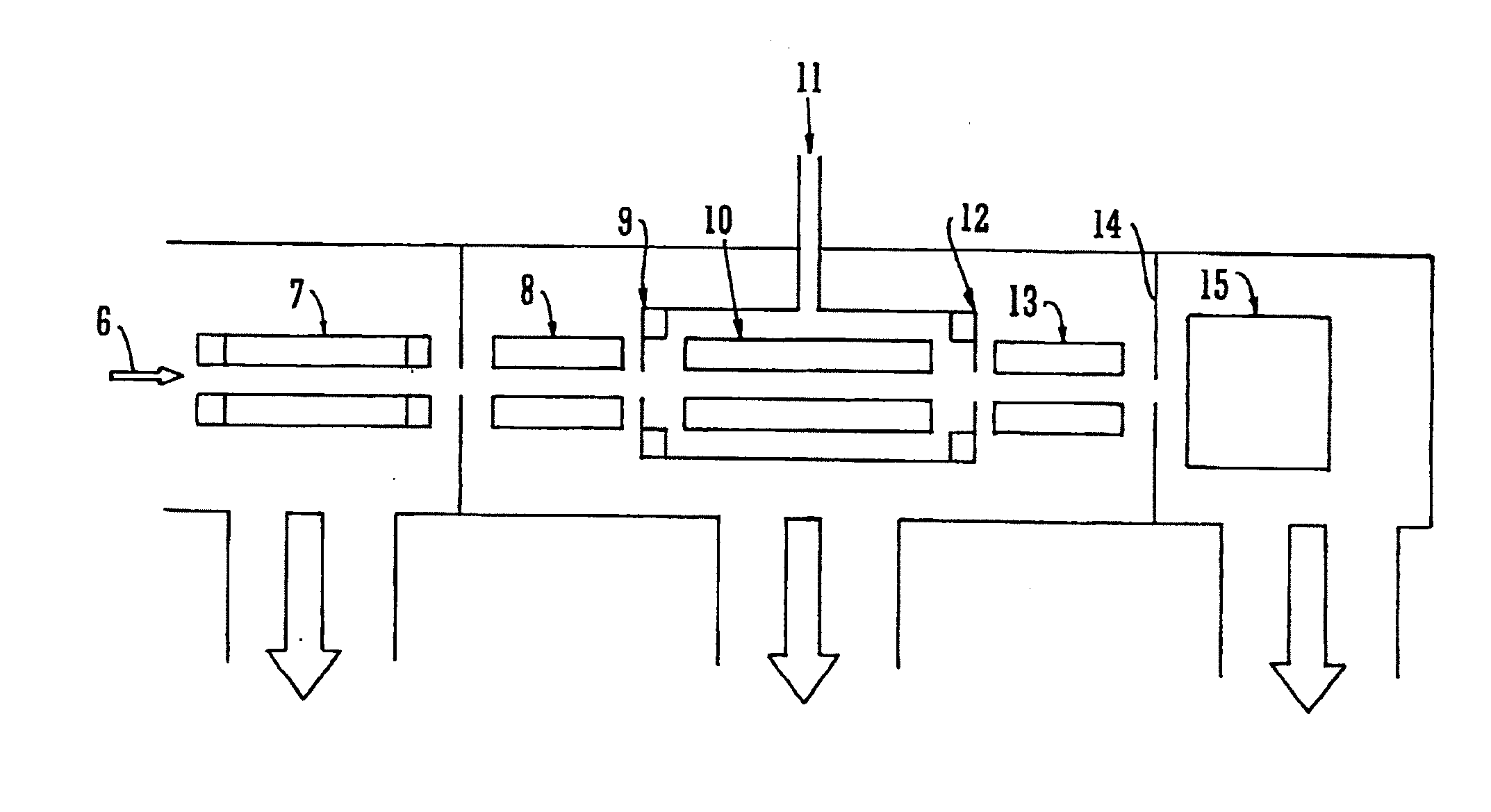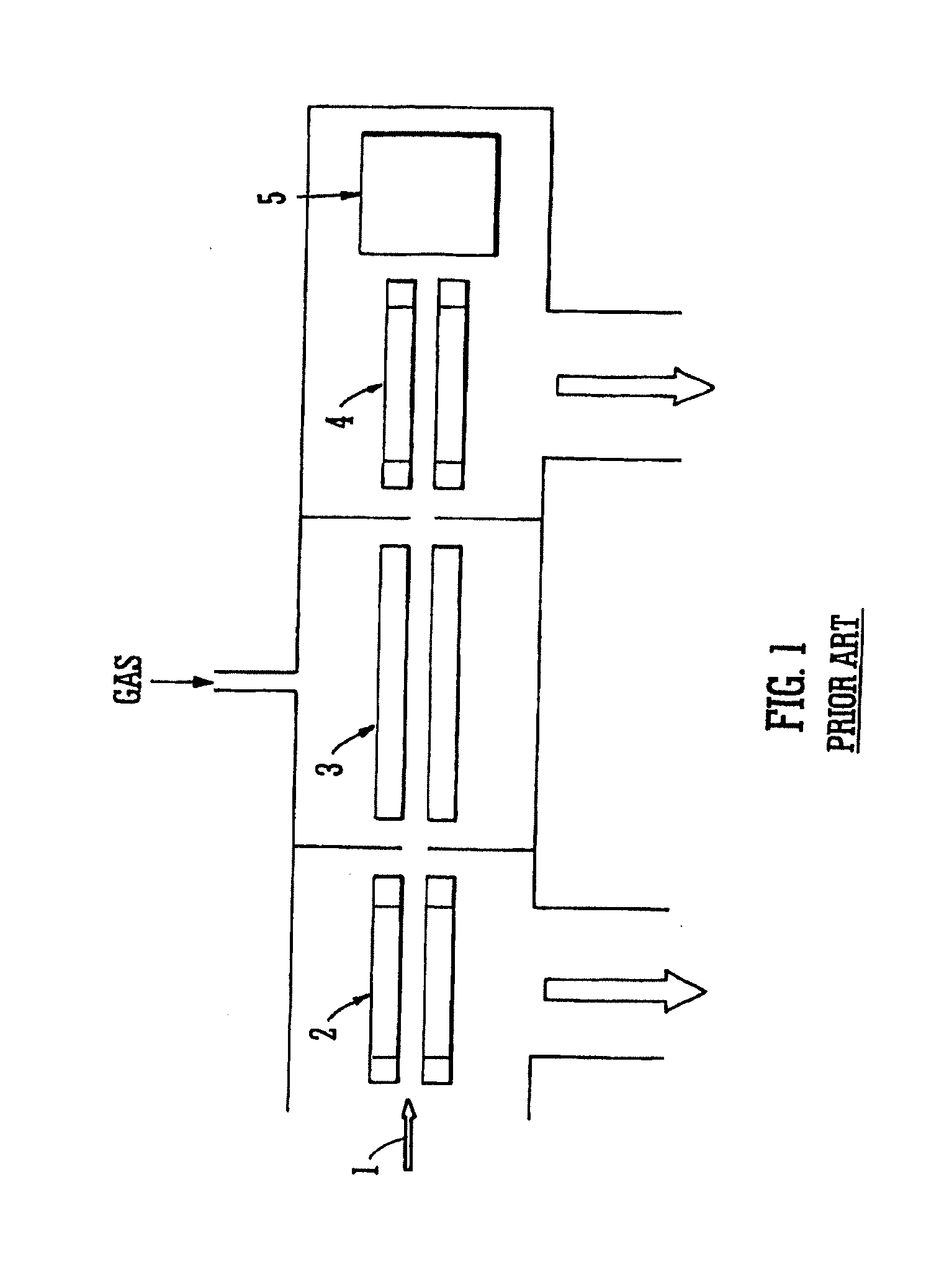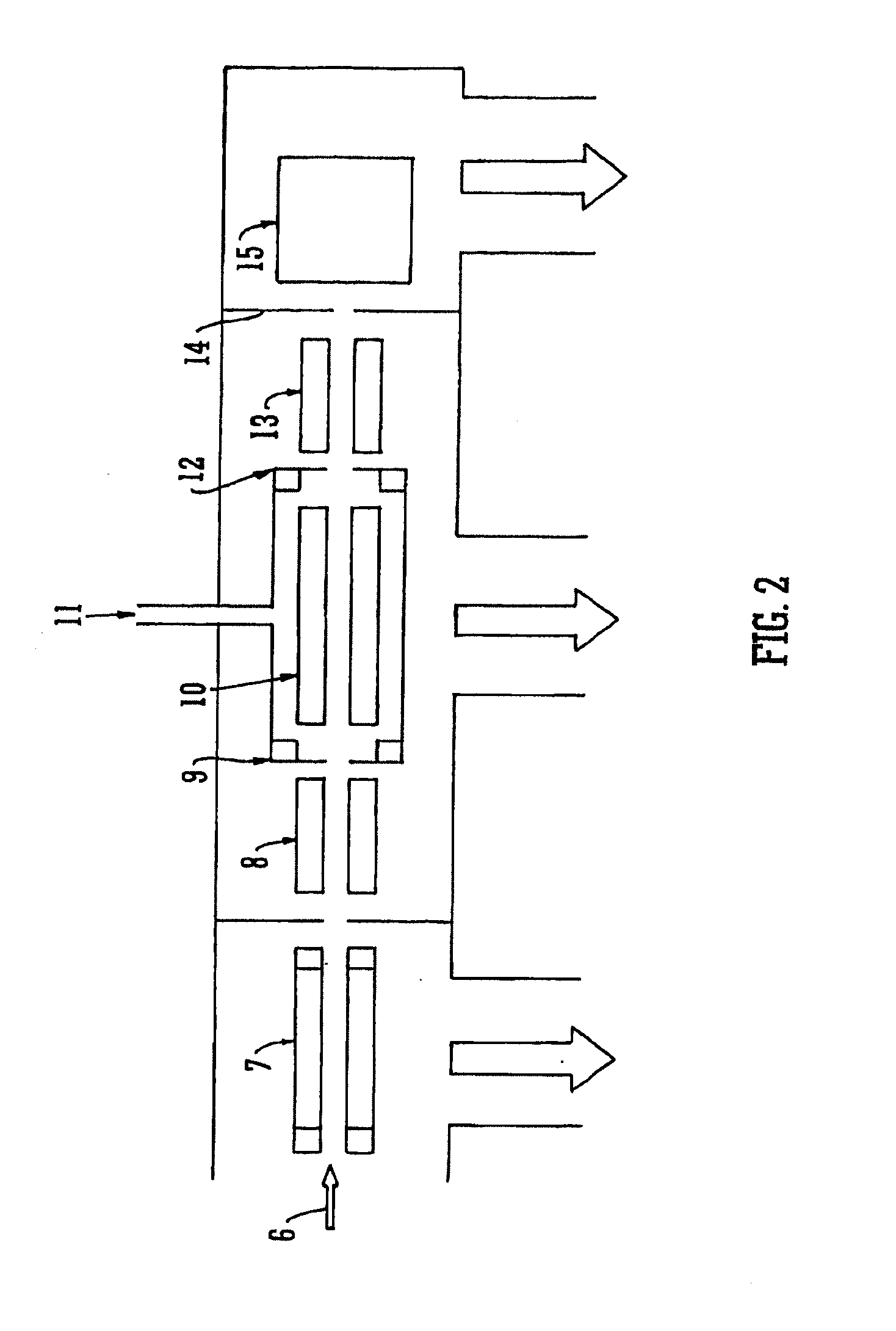Mass Spectrometer
a mass spectrometer and mass filter technology, applied in the field of mass spectrometers, can solve the problems of limiting the use of conventional triple quadrupole mass spectrometers, affecting the sensitivity of quadrupole rod set mass filter when recording a full mass spectrum, and relatively low duty cycle of this process
- Summary
- Abstract
- Description
- Claims
- Application Information
AI Technical Summary
Benefits of technology
Problems solved by technology
Method used
Image
Examples
Embodiment Construction
[0159]A conventional triple quadrupole mass spectrometer is shown in FIG. 1. Ions 1 from an ion source (not shown) are passed to a quadrupole rod set mass filter 2. The quadrupole rod set mass filter 2 is arranged to selectively transmit parent or precursor ions having a specific mass to charge ratio. The selected parent or precursor ions are then onwardly transmitted and accelerated into a collision cell 3 comprising a relatively high pressure quadrupole rod set ion guide supplied with a collision gas.
[0160]The selected parent or precursor ions which enter the collision cell 3 undergo multiple collisions with collision gas molecules present in the collision cell 3. The parent or precursor ions are induced to fragment forming fragment or daughter ions in the process. The resulting fragment or daughter ions and any unfragmented precursor or parent ions are then passed from the collision cell 3 to a quadrupole rod set mass analyser 4 which is arranged downstream of the collision cell ...
PUM
| Property | Measurement | Unit |
|---|---|---|
| voltage | aaaaa | aaaaa |
| axial length | aaaaa | aaaaa |
| RF voltage | aaaaa | aaaaa |
Abstract
Description
Claims
Application Information
 Login to View More
Login to View More - R&D
- Intellectual Property
- Life Sciences
- Materials
- Tech Scout
- Unparalleled Data Quality
- Higher Quality Content
- 60% Fewer Hallucinations
Browse by: Latest US Patents, China's latest patents, Technical Efficacy Thesaurus, Application Domain, Technology Topic, Popular Technical Reports.
© 2025 PatSnap. All rights reserved.Legal|Privacy policy|Modern Slavery Act Transparency Statement|Sitemap|About US| Contact US: help@patsnap.com



